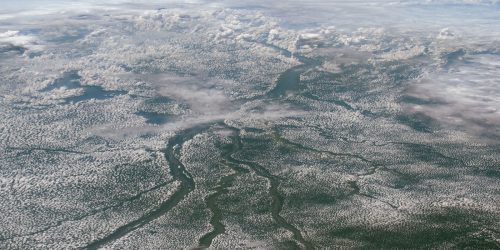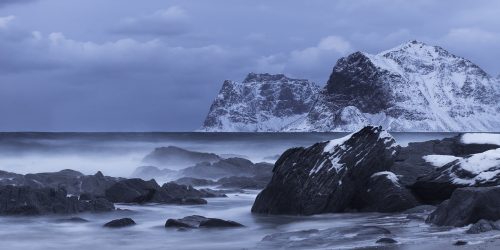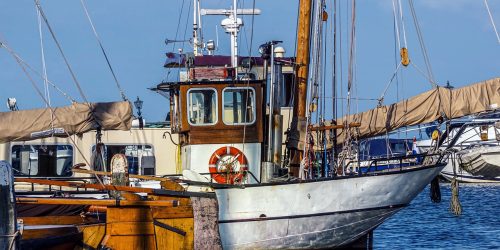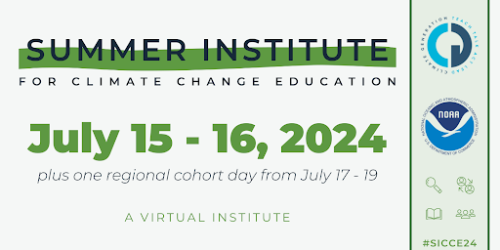NOAA’s Climate Variability and Predictability (CVP) Program, in partnership with NOAA Fisheries’ Office of Science and Technology, is announcing four new projects in Fiscal Year 2020 (FY20) that aim to strengthen the understanding of processes that affect ocean conditions in the context of climate variability and change. Project outcomes will describe how our changing climate may affect marine ecosystems and habitats for living marine resources, like protected species and U.S. fisheries, in the Large Marine Ecosystem (LME) region of the Northeast U.S. Continental Shelf. The competitively selected projects total $1.96 million, including $1.3 million in grants and $660,000 in other awards.
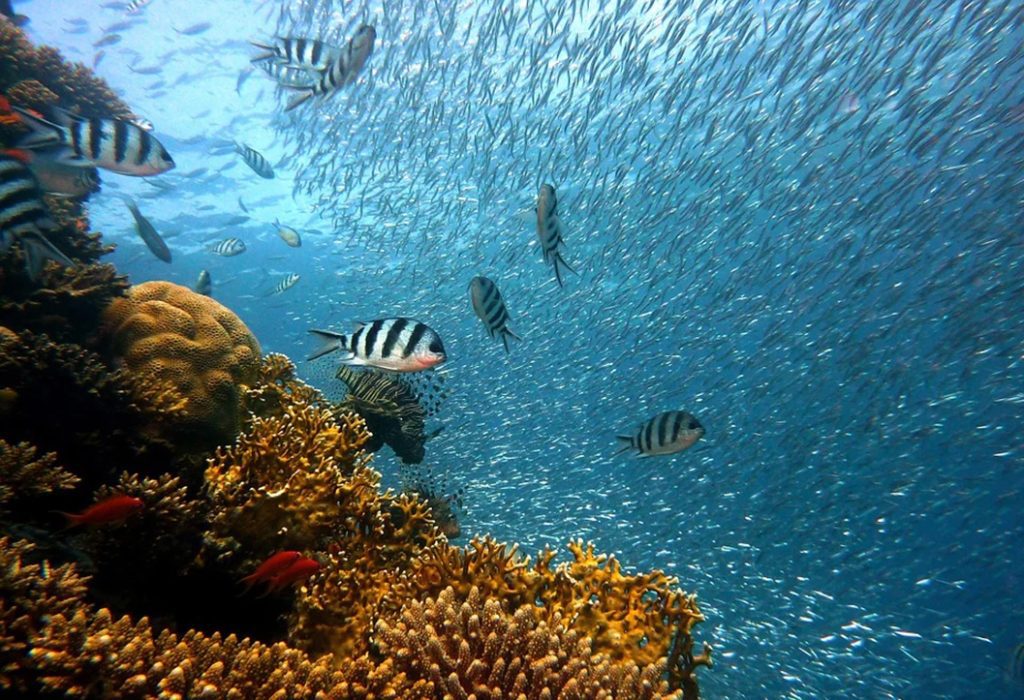
Warming oceans, rising seas, droughts, and ocean acidification—these are some of the issues affecting the nation’s valuable living marine resources (LMRs) and the people, businesses, and communities that depend on them.[1] And these impacts are expected to increase with continued changes in the planet’s climate system. There is much at risk. In the United States, ocean-related commercial and recreational fishing and the seafood industry annually contribute approximately $212 billion in sales impacts, add $100 billion to the gross domestic product, and support over 1.7 million full and part-time jobs across the broader economy.[2] Coastal habitats help defend coastal communities from storms and inundation and provide the foundation for tourism and recreation-based economies in many coastal communities. Decision-makers need climate-related information to reduce impacts and increase resilience to changing climate and ocean conditions.
To help meet these needs, CVP issued a call to solicit research projects focused on climate processes to better understand how climate impacts LMRs, how to reduce impacts, and how to increase resilience of LMRs and LMR-dependent communities. This competition was part of a cross-CPO research initiative to address climate information needs related to marine ecosystems and fisheries with the Coastal and Ocean Climate Applications (COCA) Climate and Fisheries and Modeling Analysis Predictions and Projections (MAPP) programs.
Specifically, CVP solicited model-based studies linked with observational data analysis to better understand physical changes in the ocean. This research will directly support the needs of NOAA Fisheries research in one or both of the following Large Marine Ecosystems (LMEs): California Current, and/or Northeast U.S. Continental Shelf. In particular, CVP sought research to better understand the following questions with respect to physical properties of the ocean (such as heat, freshwater, and momentum, the two-way exchange with the atmosphere; globally and/or regionally) and the impact on marine ecosystems:
- How does a particular climate phenomenon (with a timescale of months or longer, e.g., El Niño-Southern Oscillation (ENSO), North Atlantic Oscillation (NAO), etc.) drive physical ocean conditions (sea surface and subsurface temperature, salinity and currents)?
- How are ocean conditions changing in response to changing climate conditions and why?
The four new projects funded by the CVP Program in FY20 are:
- Causes for the variability and change of physical ocean conditions over the Northeast U.S. Shelf: Impacts of ENSO and NAO in a changing climate
The large marine ecosystems on the Northeast United States continental shelf (NES) are particularly vulnerable to climate variability and change because the physical ocean conditions in this region are strongly influenced by local and remote forcing (e.g. river runoff, Labrador Current), which in turn are linked to the variations in teleconnections such as the North Atlantic Oscillation (NAO) and El Niño (ENSO) at decadal timescales. The effect, however, of these linkages on NES interannual variability has never been quantified. The proposed project will carry out high-resolution modeling experiments to quantify the remote and local forcing of coastal ocean conditions (e.g. temperature, salinity, current) on NES since the 1960s on interannual and decadal timescales, investigate the associated mechanisms, and assess the impacts of NAO and ENSO on this region.- PI: Weiqing Han, University of Colorado
- Co-PI(s): Michael Alexander, NOAA Physical Sciences Laboratory; Sang-Ik Shin, NOAA Physical Sciences Laboratory & University of Colorado-CIRES
- Testing the relationship between NAO and Atlantic Multidecadal Variability over recent centuries using paleoclimate proxy data to improve decadal-scale climate predictions for fisheries management
Two major ocean currents which impact marine resources in the Northeast United States continental shelf are connected to the Atlantic Meridional Overturning Circulation (AMOC). This project aims to improve the physical representation of AMOC in climate models by using paleoclimate proxies of sea surface temperature with a reconstruction of North Atlantic Oscillation (NAO) to identify the natural physical relationships between North Atlantic climate variables and test if they are consistent with underlying physical theories. Doing so will provide long-term observational evidence of the relationship between NAO and ocean temperatures in the North Atlantic region of interest and gives insight into the mechanistic connections between the atmosphere and ocean circulation in this region on interannual to decadal time scales.- PI: Kelly Halimeda Kilbourne, University of Maryland Center for Environmental Science
- Regional multi-year prediction for the Northeast U.S. Continental Shelf
This project will investigate how the variability of large-scale climate phenomena, such as the Pacific Decadal Oscillation and North Atlantic Oscillation, drive physical ocean conditions on the Northeast United States Continental Shelf (NES), and how the improved understanding of those physical mechanisms and predictability can improve multi-year predictions for the region. Improved understanding of the processes affecting the predictability of the physical environment on NES could lead to improving critical inputs for climate-ready fisheries management models in the region. As such, this proposed research will contribute to the Northeast Climate Integrated Modeling effort to support the needs of NOAA Fisheries.- PI: Young-Oh Kwon, Hyodae Seo, Ke Chen, Woods Hole Oceanographic Institution
- Co-PI(s): Paula Fratantoni, Vincent Saba, NOAA Northeast Fisheries Science Center; Michael Alexander, NOAA Physical Sciences Laboratory
- Understanding dramatic warming and altered fisheries on the U.S. Continental Shelf through observations and multi-scale models
The warming trend observed in the Northeast United States Continental Shelf Large Marine Ecosystems during recent decades has been accompanied by significant changes in the distribution, productivity, and trophic interactions of many commercially important species. One hypothesis is that the increased presence of the Gulf Stream at the Tail of the Grand Banks (TGB) increases the fraction of subtropical waters on the continental shelf; however, the oceanographic drivers of these temperature changes have not been identified. This project will advance understanding of these physical processes and their connection with fisheries by characterizing the fluctuations of the Gulf Stream position relative to the TGB and the connection with the shelf property and fisheries fluctuations by combining observational data analysis with ocean model process studies.- PI: Jaime Palter, Kelton McMahon and Christopher Kincaid, University of Rhode Island
- Co-PI(s): Paula Fratantoni, Kevin Friedland, NOAA NMFS, Northeast Fisheries Science Center
Please see one additional project, “Mechanisms of interannual- to decadal-scale predictability for ocean physics and biogeochemistry in the California Current System” Lead-PI, Mercedes Pozo Buil, University of California Santa Cruz, funded through CVP’s Decadal Climate Variability and Predictability competition.
[1] Fourth National Climate Assessment, Oceans and Marine Resources chapter https://nca2018.globalchange.gov/chapter/9/
[2] National Marine Fisheries Service. 2018. Fisheries Economics of the United States, 2016. U.S. Dept. of Commerce, NOAA Tech. Memo. NMFS-F/SPO-187, 243.
www.fisheries.noaa.gov/resource/document/fisheries-economics-united-states-report-2016


